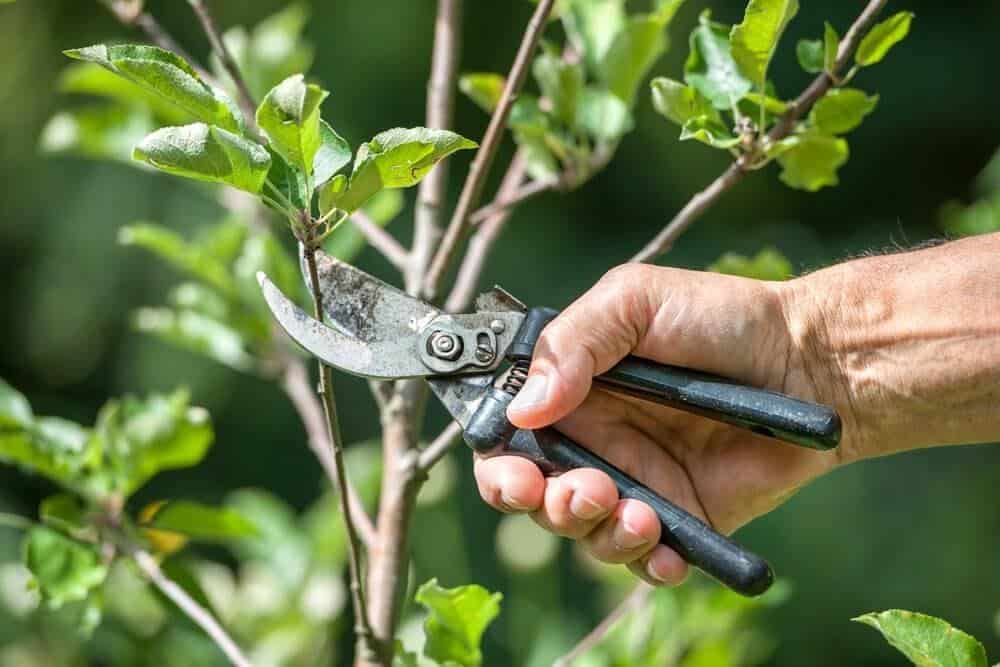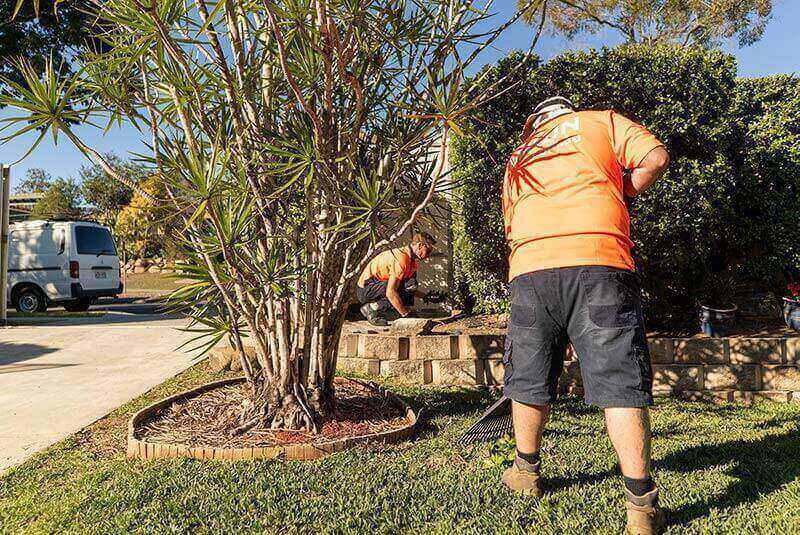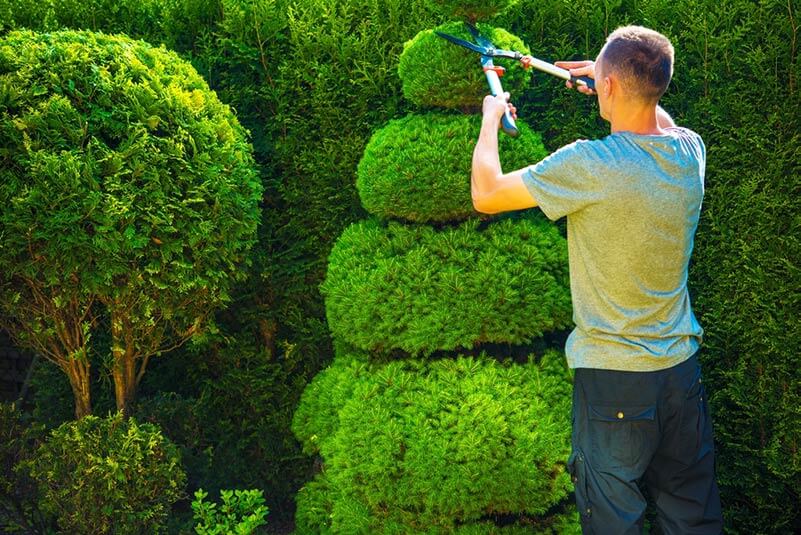There are a lot of reasons why hedges are well-loved by garden owners. For one, well-maintained hedges make your garden look more polished and add value to your property. That’s already a win for you!
Apart from making your home attractive, hedges are also versatile. Instead of the usual boring grey or lacklustre concrete walls, garden owners use shrubs and bushes as natural noise barriers, windbreak, or privacy screens. Hedges make your garden more relaxing and you get more fresh air in return.
A personal favourite of mine is the Murraya paniculata. For such a dainty-looking plant, you wouldn’t expect it to be so hardy. Don’t be fooled by its gorgeous white flower clusters and sweet-smelling orange scent, this hedge is one tough cookie!
Even with all of their benefits, hedges are still avoided by some garden owners, and understandably so. Maintaining a hedge can seem overwhelming, and different plant species have their own varying requirements.
I’m a big believer that there are no bad hedges, only misinformed choices. There is a hedge for every garden and for every purpose. It all comes down to knowing your shrubs, what you’ll use them for, and how to care for them.
One important aspect of hedge care is pruning and trimming. When to prune plants depends on the type of hedge you have. But with the number of varieties out there, it’s easy to get confused!
Worry no more because we’ll help you dissect the nitty-gritty of pruning Australia’s favourite hedges. Before you know it, you’ll enjoy pruning and trimming your shrubs, and your garden will thank you for it!
Why is pruning and trimming important?

If you’re wondering whether there is a difference between pruning and trimming, the answer is yes.
Pruning is removing dead, infected, or weak branches from your hedge, while trimming is maintaining your shrub’s size and foliage. These two are sometimes used together or interchangeably by some garden owners.
Apart from making your garden look tidy and nicely landscaped, both pruning and trimming help in the upkeep of your hedge. You want a healthy shrub with thick, dense foliage.
Removing unnecessary branches (pruning) and cutting back leaf growths (trimming) allows nutrients to be concentrated on healthier parts of the plant. This helps your hedge to branch out and also encourages growth of new buds or tips.
Both pruning and trimming let your shrub take in more air and sunshine, which are needed to keep your hedge healthy and sturdy.
When to prune hedges

Knowing how often to trim and how often to prune hedges depends on whether your shrub is evergreen or deciduous.
Evergreen hedges
Identifying evergreen shrubs is easy. Evergreens have bright, vigorous leaves all year round. No matter the season, their leaves don’t lose their lustre or fall off.
The leylandii is one stunning example. Love it or hate it, this stubborn and fast-growing hedge will always have foliage for you all year long.
How often should you prune and trim evergreens?
Evergreens thrive when they’re pruned twice a year. To get denser hedges with thicker-looking foliage, trim more frequently.
When to prune evergreen shrubs
- For formative pruning: Prune in spring after you have planted your shrub. Continue to do this during the first two years after planting.
- For maintenance pruning: Trim during summer if you want to get woodier and less dense hedges. Trim in late spring or early summer if you want to target new growths.
- For heavy pruning: Trim in late winter or early spring so that the cuts will be covered by the new growths.
Deciduous hedges
Deciduous shrubs are woody plants that have leaves that change at each turn of the season. If evergreens are literally green with leaves all year long, deciduous plants are quite the opposite. Their leaves and blossoms change over the course of the year depending on the season.
During spring, new growths appear on your deciduous shrub. Leaves are in their most prolific state during summer, then change colour and fall off during autumn. During the start of winter, the leaves have already off and the shrub is preparing to enter into hibernation.
How often should you prune and trim deciduous shrubs?
Deciduous shrubs have 2 growth spurts every year. One big growth spurt happens during spring and a smaller one during summer. Trim after each growth spurt so that your hedges will still have new growths in them.
One thing to remember about caring for deciduous plants is to conduct any major pruning when the plants are dormant. This dormant period starts after the leaves fall off during autumn, and continues through winter to early spring, before new growths appear.
When to prune deciduous shrubs
- For formative pruning: Prune your shrubs right after you have planted them. You can continue this during the first two years of the plant’s growth.
- For maintenance pruning: Lightly prune and trim during summer if needed.
- For heavy pruning: Prune during winter.
What are the benefits of dormant pruning?
A common question garden owners ask is, can you trim hedges in winter? Not only is it possible, it is also encouraged. This method is called dormant pruning.
Dormant pruning is a term used to describe the removal of dead or weak branches from a plant while it is in its hibernation state. How is this beneficial to your hedges, you might ask.
When plants are in their dormant state, they’re consuming less energy than usual. By withdrawing from their usual activity such as forming new growths or sprouting fresh blooms, they’re able to conserve their energy so that they can prepare for the coming growth season.
This means that when you prune your hedges while they are in their resting state, you’re actually causing less stress to your plants than when you’re pruning them when they are in their active and full-foliage state.
When to prune hedges in Australia

Here is a list of popular hedges in Australia and when best to prune each one:
When to prune lilly pilly
Lilly pillies are a tough, drought-tolerant evergreen hedge that produce reddish purple fruit. They are commonly called Australian cherries. The best time to prune lilly pillies is right after the last frost of winter or early spring, before new growths come out.
When to prune photinia red robin
Photinia red robins are beautiful evergreen shrubs that have distinct red leaves. They make great hedges because of their unique and striking appearance. As with lilly pillies and other evergreens, pruning photinias is best done during late winter or early spring.
When to prune viburnum
Viburnum have varieties classed under both evergreen and deciduous shrubs. The Rusty Black Haw is an example of a deciduous variety, while the Viburnum Davidii is a popular evergreen. The best time to prune viburnum is early summer, or immediately right after the shrub flowers. Pruning during autumn or early spring right before the shrub flowers runs the risk of destroying the flower buds that are due to bloom the following spring.
When to prune gardenias
Gardenias are beautiful evergreen shrubs with fragrant white flowers and thick, leathery leaves. The scent of the gardenia flower is so prized that its oil is used as a base for many commercial perfumes. The best time to prune gardenia is right after it blooms, but light trimming can be done anytime as long as extra measures are taken to protect the flower buds from being cut off.
When to prune Murraya hedge
Murrayas are evergreen shrubs that produce sweet-smelling white flowers. They are a fast-growing hedge and can be used as a windbreak, noise barrier, or privacy screen. When and how to prune Murraya is largely dependent on its flowers. The best time to prune Murraya is during late autumn, right after it flowers. Pruning lightly during this time encourages the growth of new flowers the following spring. Avoid following a box shape when pruning so that the growth of the flowers is not impeded.
When to prune a Portuguese laurel hedge
Portuguese laurels are striking evergreen hedges that have glossy emerald green leaves and a bright maroon stem. They can withstand salty air from the coastal areas and are widely used as a stand-alone hedge or as an accent when placed with other shrubs. The best time to prune a Portuguese laurel would be during spring or summer, but light trimming can be done throughout the year if you’re not too concerned about having flowers in your hedge. This is because the Portuguese laurel does not flower well when under stress, which is what happens when a plant is pruned or trimmed.
When to prune buxus

Buxus is a popular evergreen shrub that can be easily formed into different shapes because of its dense and compact foliage. Buxus is also commonly called box or boxwood. The best time to prune buxus is late winter or early spring, right before new growths appear. Buxus should be pruned at least twice a year to keep it dense and compact, but if you want your hedge to maintain its polished and tight shape, it’s best to prune it up to 4 times a year. Avoid pruning during late fall, as new growths that appear after trimming may not survive the frost from the incoming winter.
When to prune bamboo
Bamboo is a thin evergreen hedge that belongs to the grass family. It’s a popular choice for hedging in Australia because it is fast-growing and hardy. The slender culms and leaves of the bamboo add a graceful touch to any garden. The best time to prune bamboo is during late summer or fall, after new shoots have formed. Trimming off the leaves while the shoots are forming depletes the bamboo’s capacity to produce new shoots.
When to prune forsythia
Forsythia is a deciduous shrub that’s popularly used for hedging because of its graceful arch shape and golden yellow flowers and foliage. The best time to prune forsythia is after flowering to give its flowers to fully grow and bloom. Dormant pruning during late winter or early spring is also recommended as this prepares the shrub for new growths during spring.
Safety is important
Any good doctor knows that the patient’s well-being is top priority, and the same idea applies when pruning your hedge.
Imagine that when you prune and trim, you become your plant’s surgeon and your garden is the operating room. Any cut you make on your shrub is an open wound. As your plant’s doctor, you would want your shrub and yourself to be safe, your environment to be clean, and your cuts swift and precise.
We’ve already talked about when to prune your hedge and how often. We’re sharing with you our best safety practices and tips on how to prune so that you can make sure you and your shrub are in good hands.
Tools for pruning
Always start with a good set of pruning tools. As a general rule when cutting or slicing anything, make sure that your tools are sharpened well and free of any rust or impurities. Never use blunt tools when you’re pruning or trimming.
Not only will good quality tools give your hedge a tailored look, they will also minimise your risk of getting injured while pruning. These are the pieces we recommend you invest in if you’re planning to do a DIY pruning of your hedge:
- A pair of sharp secateurs is must and is particularly helpful when you’re trimming overgrown hedges that need a little bit more tidying up.
- You’ll need a narrow pruning saw that you can easily manoeuvre through tight branches.
- A good pair of hedge clippers can cut through messy leaves and stubborn branches. You may need a bit of arm strength when using this, though.
Best tips on how to prune
- Wear the proper protective clothing when pruning. A good pair of gloves will protect your hands from thorns and sharp branches. Wear protective goggles to prevent small leaves and branches from flying into your eyes.
- Prune in one clean, swift motion. Be sure not to tear any part of the plant, especially the bark, to prevent any bacteria or insects from infesting it.
- Shape your hedge by starting from the bottom and working your way up. This way, you can control the form of your hedge better and your shrub does not run the risk of getting pruned too heavily at the base.
- The base of your hedge should be bigger than the top when you’re done pruning. Think of a cone or a triangle. This will allow all parts of your shrub to be exposed to sunlight, not just the top part.
- While there isn’t a single best time for pruning, late winter is a good time to prune deciduous hedges because this promotes fast growth of new foliage.
DIY Pruning vs professional pruning

Don’t worry if you feel that you’re not ready to tackle pruning your hedge just yet. You don’t have to suffer through a wayward and gargantuan mess of a shrub. You can always inquire with your local lawn and gardening service on how to prune hedges to grow fuller, or request for a pruning service altogether.
Hiring a professional to do the job not only brings you the ease of having a polished hedge without lifting a finger, your shrub will also enjoy the long-term benefits of a professional pruning such as less susceptibility to disease and better preparation for new growths to appear. Your professional lawn care service provider will also make sure that the green debris from pruning is properly cleaned after and disposed of. If you’d like to know more on how we can help, give us a call and we’ll be happy to assist you.

